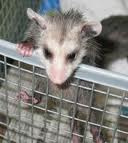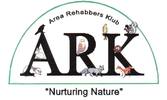HELP! I Found A...

OPOSSUM
Opossums can have a litter of up to thirteen babies two to three times a year between February and September. While in the pouch they start out at the size of a bean with no fur, eyes and ears closed with their mouths sealed around the nipple. The babies remain in the pouch until about two months of age. Fully furred and eyes open. At this stage, they will come out of the pouch and cling to the mother's tail and fur while learning about their surroundings.
Steps to follow if you should need to rescue:
Step 1: Keep warm. Place babies in a covered container (with air holes) on a soft cloth that does not snag or have strings. Put the container on a heating pad set on low or provide some other source of heat. Example would be to put rice in a sock and heat in the microwave for 30 seconds. Place sock under bedding.
Step 2: Check for fly eggs and injuries. Fly eggs look like sawdust or clumps of white/yellow dirt. Remove these as quickly as possible. If they hatch it can cause more injury and possibly death. An injured opossum must receive antibiotics within eight hours in order to prevent infection, especially if attacked by a cat or dog.
Step 3: Do not feed any milk or baby formula. Animals are lactose intolerant. There is special animal milk replacers used for their needs. You can offer Pedialyte or diluted Gatorade by dropper or syringe for a hydration fluid once the baby is thoroughly warm. Never feed a cold baby. Call a licensed wildlife rehabilitator for instructions prior to feeding.
Opossums can have a litter of up to thirteen babies two to three times a year between February and September. While in the pouch they start out at the size of a bean with no fur, eyes and ears closed with their mouths sealed around the nipple. The babies remain in the pouch until about two months of age. Fully furred and eyes open. At this stage, they will come out of the pouch and cling to the mother's tail and fur while learning about their surroundings.
Steps to follow if you should need to rescue:
Step 1: Keep warm. Place babies in a covered container (with air holes) on a soft cloth that does not snag or have strings. Put the container on a heating pad set on low or provide some other source of heat. Example would be to put rice in a sock and heat in the microwave for 30 seconds. Place sock under bedding.
Step 2: Check for fly eggs and injuries. Fly eggs look like sawdust or clumps of white/yellow dirt. Remove these as quickly as possible. If they hatch it can cause more injury and possibly death. An injured opossum must receive antibiotics within eight hours in order to prevent infection, especially if attacked by a cat or dog.
Step 3: Do not feed any milk or baby formula. Animals are lactose intolerant. There is special animal milk replacers used for their needs. You can offer Pedialyte or diluted Gatorade by dropper or syringe for a hydration fluid once the baby is thoroughly warm. Never feed a cold baby. Call a licensed wildlife rehabilitator for instructions prior to feeding.

